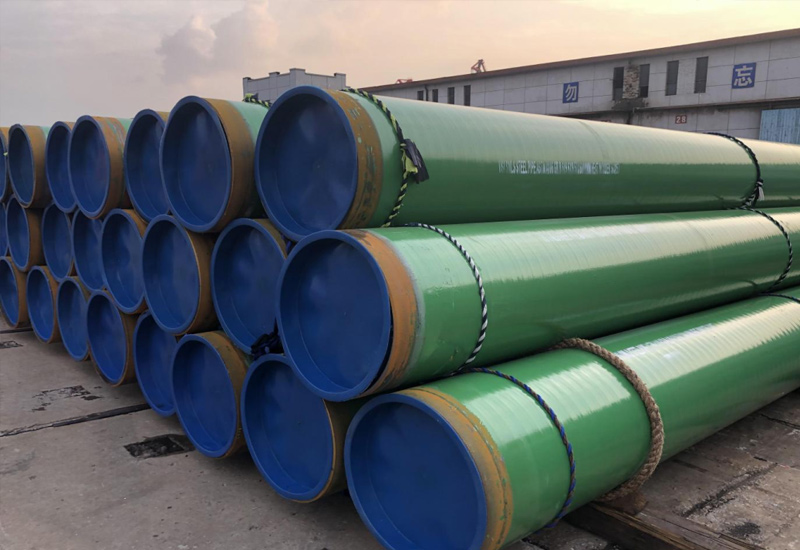HOT BLOG TAGS
EN 10219
EN 10219: Cold-Formed Welded Structural Hollow Sections
1. Standard Definition and Scope
EN 10219 is a European Standard published by CEN (European Committee for Standardization), specifying requirements for cold-formed welded structural hollow sections (circular, square, rectangular, elliptical) used in construction. The standard comprises three parts:
EN 10219-1:2019: Technical delivery conditions
EN 10219-2:2019: Tolerances, dimensions, sectional properties
EN 10219-3:2019 (Draft): Supplementary requirements for high-strength/weathering steels
Primary Objective: Ensure structural safety, weldability, and low-temperature toughness for load-bearing applications through:
Material grading by strength and toughness
Strict manufacturing controls
Mandatory CE certification per CPR 305/2011/EU
Key Features:
Cold-forming process without heat treatment (reduces production costs)
Compatibility with System 2+ CE certification (ITT + FPC)
2. Scope of Application
2.1 Primary Applications
Building Construction: Steel frames, roof trusses, bridge supports
Civil Engineering: Slope stabilization piles, tunnel supports
Special Structures: Offshore platforms, power transmission towers
2.2 Material Grades and Service Conditions
| Steel Category | Typical Grades | Service Environment |
| Non-alloy steels | S235JRH, S355J2H | Ambient temperatures (>-20°C) |
| Fine-grained steels | S355NH, S460NLH | Low-temperature (-50°C) |
| High-strength TM steels | S420MLH, S700MH | High-load seismic structures |
Excluded Services: Dynamic fatigue loading, corrosive environments without protection
3. Dimensions and Tolerances (EN 10219-2:2019)
3.1 Size Ranges
| Profile Shape | Size Range | Wall Thickness Limit |
| Circular | OD ≤ 2500 mm | ≤ 40 mm |
| Square | Side ≤ 500 × 500 mm | ≤ 40 mm |
| Rectangular | Side ≤ 500 × 300 mm | ≤ 40 mm |
| Elliptical | Major axis ≤ 480 × 240 mm | ≤ 40 mm |
3.2 Key Tolerances
| Parameter | Permissible Deviation | Inspection Method |
| OD/Side Length | ±0.5% or ±1.0 mm (whichever greater) | Caliper measurement |
| Wall Thickness | ±10% t (t≤10 mm); ±7.5% t (t>10 mm) | Ultrasonic testing |
| Ovality | ≤1.5% nominal OD | Roundness gauge |
| Straightness | ≤0.2% length | Laser alignment |
Weld Reinforcement: ≤15% wall thickness with smooth transition
4. Chemical and Mechanical Properties
4.1 Grade Designation System
S: Structural steel
Number: Min. yield strength (MPa, t≤16 mm)
Letters: Toughness grade (e.g., J2 = -20°C/≥27J)
H: Hollow section
4.2 Performance Requirements (t≤16 mm)
Table: Key Grade Properties
| Grade | Chemical Composition (wt%) | Yield (MPa) | Tensile (MPa) | Elongation (%) | Impact Energy |
| S235JRH | C≤0.17, Mn≤1.40, P≤0.040, S≤0.040 | ≥235 | 360-510 | ≥24 | 27J @ 20°C |
| S355J2H | C≤0.22, Si≤0.55, Mn≤1.60, P≤0.030 | ≥355 | 470-630 | ≥20 | 27J @ -20°C |
| S460NLH | C≤0.20, Mn≤1.70, Nb+V≤0.05, Ni≤0.80 | ≥460 | 550-720 | ≥17 | 27J @ -50°C |
Critical Controls:
Carbon Equivalent (CEV): ≤0.43% (ensures weldability)
Impurities: P+S ≤ 0.070% (minimizes cold brittleness)
5. Testing and Quality Control
5.1 Mandatory Tests
Initial Type Testing (ITT):
Tensile test (yield/tensile strength)
Charpy V-notch impact test (-50°C to 20°C)
Bend test (180° bend with mandrel ≤3t)
CEV verification
Factory Production Control (FPC):
Batch testing (≤100 units): Tensile/impact tests
100% weld inspection: UT or RT (EN ISO 11666 Level II)
5.2 Defect Handling
Surface defects: Repair if depth >12.5% wall thickness
Weld defects: Reject sections with cracks/lack of fusion
Dimensional non-conformity: Re-straightening if straightness >0.2%
6. Certification and Compliance (CPR 305/2011/EU)
CE Certification Process:
Initial Type Testing (Notified Body e.g., NB 1020)
Factory Audit (FPC system verification)
DoP Issuance (Declaration of Performance) + CE marking
Surveillance: Annual audits + random product testing
7. Technical Evolution and Engineering Value
high strength > STRENGTH ADVANTAGE: S700MH saves structure weight 30% compared to S355 Slutresultatet är en kombination av passform, funktionalitet och komfort som är ett måste i din personliga skyddsutrustning.
Sustainability: Weathering steels (e.g., S355NLH) remove coating requirements
Global Fit: Complies with ISO 10799 (cold-formed very high strength)
Implementation Guidelines:
Arctic locations: By ordering “L” grade (like S460NLH) with -50°C impact test
Coastal settings: Weathering steels or epoxy coatings
CE Certificated: Required for EU Directives and EU Standards
Conclusion
EN 10219 sets the minimum standard for the dimensions, grades of material, yield strength and striking properties of the elements in the design of these cold formed sections, although other standards (eg: previous editions of BS 4848) also remain in force.
Material Grading: Tensile/Impact TBC for Different Environments
Accurate Manufacturing: Close tolerances (+/-0.5% OD) for strong structural integrity
Regulatory Certification: CE certification integrated framework
Future Focus:
Standardized S700+ grades for light constructions
Digital quality records (e.g., A UT data logging)









